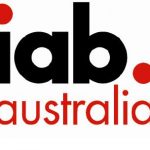Personal cloud is a phrase I have heard being used for several years now. The image I have is a virtual storage cloud that contains all of your proprietary data through applications like Dropbox, Evernote and Google Drive. From what I’ve recently learned, this notion only scrapes the surface of both what is possible and what is unfolding right now.
The reason this is such a big deal is because it turns today’s data model on its head. A plethora of big businesses today have many a zero added to the asset column of their balance sheets, due to the vast quantities of personal data about you and me, that they own. Listening to Doc Searls and Kevin Kox speak, with authority, at my first un-conference hosted by Fifth Quadrant, something that has never really resonated with me is that “you can’t own data, you can own where the data resides but you can’t own data.”
Kevin Cox has always been an advocate for years, in that you should have some say in what happens with the data, about you, that is stored in big business. The change to Australia’s Freedom of Information Act on 12 March this year has been a significant progression on this topic, part of the recent change is that you can ask an organisation to supply you the information on the data that is you, in the format you want.
What I have come to understand about personal clouds is that you’re not going to have to change anything that’s out there, a personal cloud is just another way to access data, when and where you want, on any device and in real time. A personal cloud transmits the data and simply provides a service. It makes connecting and sharing information safe, accommodating all the devices and operating systems that come and go in our lifetime. The biggest disruption this will bring is the ability for you, yes you, to own and control your own data, granting permission for any individual, organisation or entity to access it.
“It will allow you to move information from one organisation to another organisation in a privacy friendly manner ” Cox said. This has the potential to make big business much more efficient. Can you imagine not having to fill-in any forms for a home loan? If you and the organisation (in this case, the bank) agree to share information then this is now possible. Even a simple thing like updating your contact details with all the entities you have relationships with; can now be done by you, through your smartphone at the tap of an authentication application.
From what I understand, the founding technology at Kevin Cox’s WLPC (White Label Personal Clouds) has been built in a lean start up methodology and is functional today. Business is free to build applications on this new underlying infrastructure. Authentication is the most critical element here, a product like WLPC allows a browsing end-user to be automatically known to the website. You can request information about yourself and also control what the website knows about you. Logins will be replaced by a “common public key, private key PKI technology, https, and cookies.”
You can then share data across the websites, at your discretion, based on your permissions. “When a person logs on to any website and authenticates themselves then a private public key pair is created. The public key is put in the person’s browser, either directly or with cookies, and the private key is distributed securely to all WLPC enabled websites. Methods of authentication, that the customer allows, are sent to all the WLPC enabled websites. The public key/ private key match is reset periodically or whenever there is a new authentication event.”
Doc Searls referenced this change in computing to be as significant as when mainframes were replaced by PC’s and the ‘personal computer revolution’ changed the way business operated. In the early 80’s, ‘personal computers’ was an oxymoron, several years later “corporate power became personal.” He alluded to the logical possibility that “people may be able to do more with big data than the companies can do themselves.” In the new world of the Internet of Things, devices have their own clouds and people that own the devices will own those clouds. Relationships between customers and companies are going to change. We will be in charge of our data like we are in charge of our devices. Every single thing has a collection of data and you have control and it’s useful to start to “think of the personal cloud as a zone of control.” PCs were not expected to enter big business, networking and the internet wasn’t either, followed by BYOD. While it’s hard to wrap your head around personal clouds, this too (like the disruptive technologies before it) will make business more efficient.
So knowing what I do now, a personal cloud is more like a personal computer – virtual operating system, linked to your own permission identity, controlling your; data, communications, applications, accounts and data-based-business relationships. Allowing you to securely share your data, to entities of your choice, across all your computers, devices and even objects.
It’s an exciting concept and it’s happening today.
Doc Searls is an author of The Cluetrain Manifesto and The Intention Economy: When Customers Take Charge) as well as an alumnus fellow of the Berkman Centre for Internet & Society at Harvard University.
Kevin Cox’s work focuses on private identity management; empowering individuals by giving them control over their online electronic information. Such as an individual proving whom they are through accessing electronic information about themselves or providing the technology so individuals can securely store information about themselves on devices that they physically control. His Australian company, WLPC (White Label Personal Clouds) is one of about 20 companies focusing on novel inventions that will change personal computing the way we know it.

